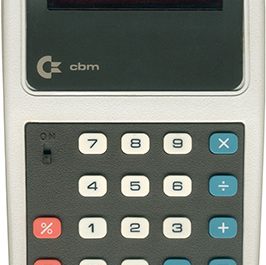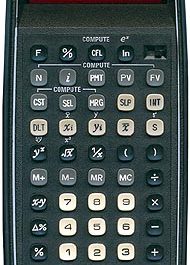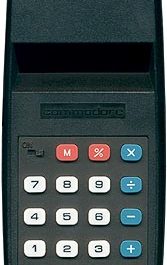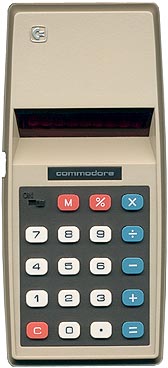
The Commodore 776M calculator, also known as the CBM 776M, was a cutting-edge device released in 1975 by Commodore Business Machines Inc., based in Palo Alto, California. This calculator was notable for its innovative design, centered around a new integrated circuit (IC) and a vivid LED display. The 776M’s elongated form factor was due to the battery compartment situated above the LED display panel, giving it a distinctive appearance.
The Commodore 776M was designed with user-friendly “people logic,” an algebraic logic system that allowed users to input numbers sequentially, mirroring the way they would write them down on paper. This intuitive approach made the calculator accessible and easy to use for a wide range of people.
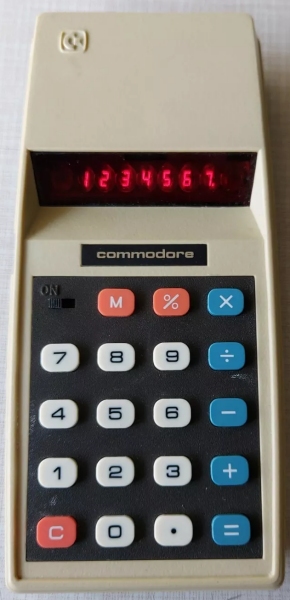
Technical Specifications
- Size: Approximately 65mm (width) x 137mm (height) x 24mm (depth)
- Weight: 84g (excluding batteries)
- Power: 9.0V DC, powered by a single PP3 size battery. It also accepts an adapter (DC-620 or 505) through a socket on the left side.
- Case: A two-piece dark brown and beige matte plastic case with a black keyboard surround. The case features a silver-painted raised logo and a red convex plastic display filter, which provides a bright image but with a limited viewing angle. Just below the display is a black printed metal plate with the company name, sitting in its own recess.
- Display: 7-digit red LED with a bubble lens, lacking an eighth digit.
- Features: Basic four-function capabilities with a three-function memory and percentage calculations.
Manufacturing and Distribution
The Commodore 776M was a mass-produced product, manufactured in various countries including the US, UK, Japan, and Canada. This widespread production ensured its availability and affordability, contributing to its popularity.
User Experience
The calculator’s tall, slim shape was a common design for many early Commodore calculators, primarily to accommodate the bulk of the battery at the top. The buttons, while described as squishy, were responsive and functional. Each key had an individual coil spring to push the plastic button back up, ensuring a smooth operation. The bold three-color button system was effective, although the functions were basic. The calculator was sold without a battery and came with a 90-day guarantee.
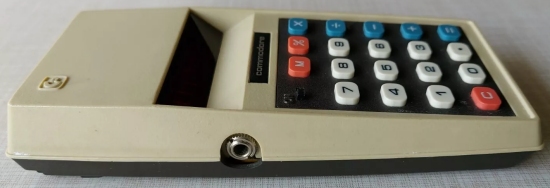
Components and Disassembly
- CPU: Commodore GRBP-67 7549 (week 49 of 1975), 24-pin DIL, 0.6″ width.
- Display Driver: ITT 546a-5N 7535, 16-pin DIL.
- Display: 9-digit LED with a bubble lens display unit.
The keyboard board is fixed to the front via three screws and two rivets and is attached to the main CPU board. Disassembly involves removing the single screw in the battery compartment, gently pushing aside the two lugs in the recesses, and removing the back, which is hinged from the top. The adapter socket must then be loosened to hinge out the main CPU board.

Logic
- (C) is used once to cancel the last number entered and a second time to clear the entire calculator.
- There is no constant on any function.
- Input overflow is suppressed; inputting an eighth digit is ignored.
- Negative numbers are shown with a “-” in the immediate left-hand digit. As there is no eighth digit, seven-digit negative numbers are not allowed.
- Divide by zero shows “E000000” (no decimal point) and is recoverable by dividing it by 1.
- Overflow shows the result with “E” (negative or positive) in the leftmost (seventh) digit and is recoverable by continual division by 10 (or a multiple).
- Memory is not indicated—users must remember it.
- To enter data into the memory, use (=)(M). To add, use (+)(M)(=)(M). To subtract, use (-)(M)(=)(M). To clear, use (0)(=)(M).
- The percentage key divides the result by 100 and can be used to recover overflows.
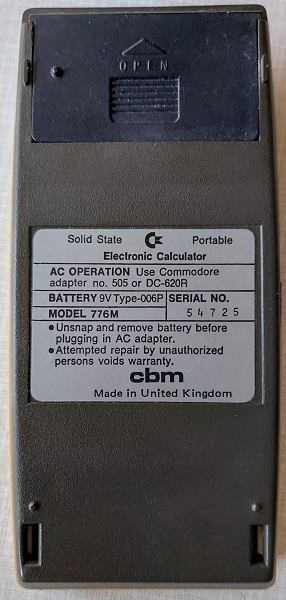
Summary
The Commodore 776M calculator was a pioneering device that combined innovative design with user-friendly logic. Its distinctive form factor, intuitive “people logic,” and basic yet functional features made it a popular choice among consumers. Despite some limitations, such as the lack of a constant function and a somewhat arduous memory system, the 776M remains a notable example of early calculator technology. Its mass production in multiple countries further solidified its place in the history of consumer electronics.
